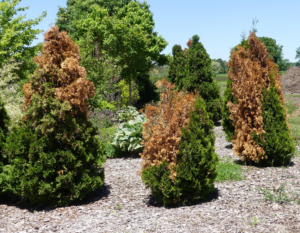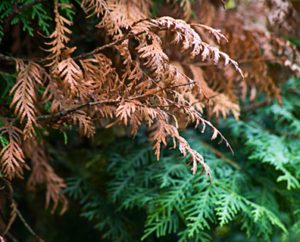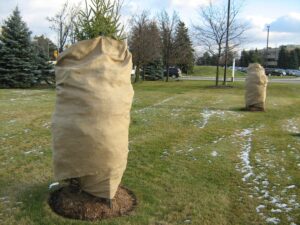How to protect your Evergreens for Winter

Wisconsin winters can be harsh and Evergreens are resilient when it comes to battling the bitter cold, but that doesn’t mean they can’t be damaged. Giving them added protection can help beat out disease and future damage.
Winter Burn on Evergreens
The biggest problem to your Evergreens during the cold months is winter burn. Winter burn browns the leaves and needles on your trees. It can be so severe that the plant can die from it and will end up needing to be replaced.
Winter burn makes its way inward. It starts at the tip of the needle and works its way down towards the base.
To learn more about winter burn visit University of Wisconsin Horticulture.
Protecting your Evergreens
Mulch your Evergreens in the fall
Mulching in the fall can help plants to retain moisture during the snowy season and regulate soil temperature. Mulching can delay the underground soil from freezing as quickly. Which gives plants more time to soak in moisture into their roots.
Deep Watering before frost
Giving your plants a deep watering before the ground freezes helps the plants roots to retain more moisture. This creates a good water supply for them before the ground freezes.
Wrap with burlap 
Drying winter winds are especially damaging to Evergreens. Wrapping them with burlap can help to avoid the harsh winds and sun. Give them the extra layer of protection by lightly wrapping them around the base and leaving the top open to allow light in. Wrapping Evergreens can also protect them from street salt.
Heavy Snow
Snow can collect on branches and weigh them down. To much snow that accumulates can bend and break the branches. Keep an eye on your evergreens during the cold months and brush off the snow to avoid broken branches.
